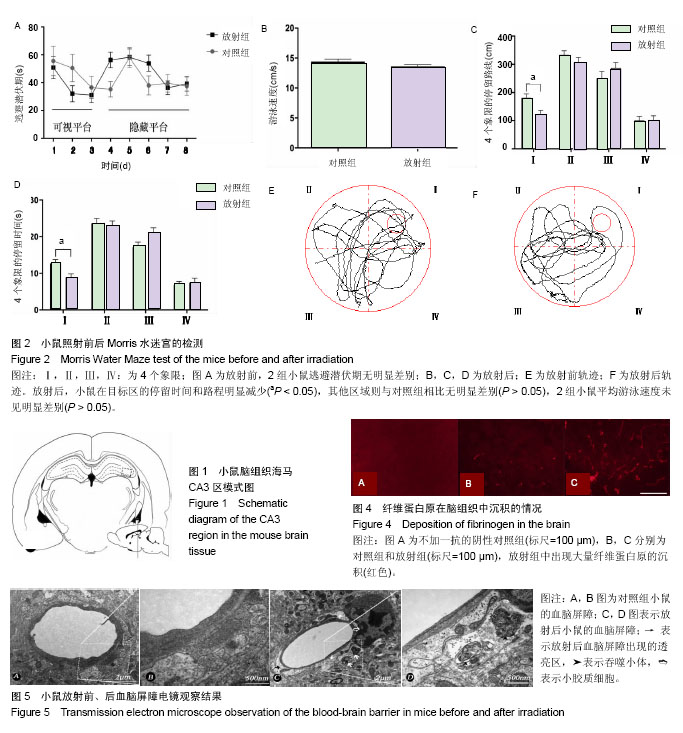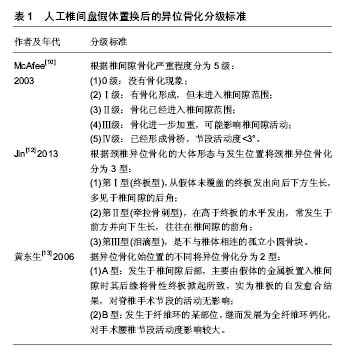| [1] Yang S, Wu X, Hu Y, et al. Early and intermediate follow-up results after treatment of degenerative disc disease with the Bryan cervical disc prosthesis: single- and multiple-level. Spine. 2008;33:E371-E377.[2] Kibuule LK, Jeffrey S, Fischgrund JS. Complications of cervical disc arthroplasty. Semin Spine Surg. 2009;21: 185-193.[3] 刘浩,邓宇骁,刘子扬,等. Pretic-Ⅰ人工颈椎间盘置换术治疗颈椎间盘突出症的早期疗效观察[J].中国修复重建外科杂志,2017, (31)5:1-6.[4] Dong L, Tan MS, Yan QH, et al. Footprint mismatch of cervical disc prostheses with Chinese cervical anatomic dimensions. Chin Med J (Engl). 2015;128(2): 197-202.[5] 唐文. 颈椎间盘置换与颈前路椎间盘切除减压植骨融合治疗退变性颈椎病的Meta分析[D].南昌大学,2010.[6] 娄纪刚,刘浩,龚全,等. 单节段 Prestige LP 人工颈椎间盘置换术后置换节段活动度的影响因素分析[J]. 颈腰痛杂志, 2015, 36(1):20-24.[7] 徐帅,朱震奇,钱亚龙,等.颈椎人工椎间盘置换与椎间盘切除融合术后邻近节段退变比较研究的Meta 分析[J].中国脊柱脊髓杂志, 2017,27(4):296-304.[8] Porchet F, Metcalf NH. Clinical outcomes with the prestige II cervical disc: preliminary results from a prospective randomized clinical trial. Neurosurg Focus.2004;17:E6.[9] 梁英杰,张光明,温世峰,等. Discover人工颈椎间盘置换术后异位骨化的临床研究[J].中国临床解剖学杂志,2015,33(3): 336-340.[10] McAfee PC, Cunningham BW, Devine J,et al. Classification of Heterotopic Ossification (HO) in artificial disk replacement. J Spinal Disord Tech. 2003;16(4): 384-389.[11] Brooker AF, Bowerman JW, Robinson RA, et al. Ectopic ossification following total hip replacement. J Bone Joint Surg (Am). 1973;55:1629-1632.[12] Jin YJ, Park SB, Kim MJ, et al.An analysis of heterotopic ossification in cervical disc arthroplasty:a novel morphologic classification of an ossified mass. Spine J. 2013;13:408-420.[13] 黄东生,梁安靖,叶伟,等.人工腰椎间盘置换术后异位骨化的危险因素及其对策[J].中华外科杂志, 2006,44(4):242-245.[14] Goffin J. Complications of cervical disc arthroplasty. Semin Spine Surg. 2006;(18):87-98.[15] Yi S, Kim KN, Yang MS, et al. Difference in occurrence of heterotopic ossification according to prosthesis type in the cervical artificial disc replacement. Spine. 2010;35: 1556-1561.[16] Suchomel P, Jurak L, Benes V 3rd, et al. Clinical results and development of heterotopic ossification in total cervical disc replacement during a 4-year follow-up. Eur Spine J. 2010;19: 307-315.[17] Lee JH, Jung TG, Kim HS, et al. Analysis of the incidence and clinical effect of the heterotopic ossification in a single-level cervical artificial disc replacement. Spine J. 2010;10:676-682.[18] 孙宇,赵衍斌,周非非,等.Bryan颈椎人工椎间盘置换术后5年随访结果[J].中国脊柱脊髓杂志,2012,22(1):1-7.[19] Walraevens J, Demaerel P, Suetens P, et al: Longitudinal prospective long-term radiographic follow-up after treatment of single-level cervical disk disease with the Bryan Cervical Disc. Neurosurgery. 2010;67:679-687.[20] 赵耀,刘屹林,王利民,等.Activ C人工椎间盘置换术治疗颈椎病的早期疗效[J]. 中国脊柱脊髓杂志,2012,22(10):868-873.[21] 张雪松,张永刚,肖嵩华,等.节段人工椎间盘置换治疗颈椎病的中长期疗效[J]. 中国脊柱脊髓杂志,2012,22(10):879-884.[22] Leung C, Casey AT, Goffin J, et al. Clinical significance of heterotopic ossification in cervical disc replacement:a prospective multicenter clinical trial. Neurosurgery. 2005;57: 759-763.[23] Kerr EJ, Jawahar A, Kay S,et al. Implant design may influence delayed heterotopic ossification after total disk arthroplasty in lumbar spine. Surg Neurol.2009; 72:747-751.[24] Yang S,Wu X,Hu Y,et al. Early and intermediate follow-up results after treatment of degenerative disc disease with the Bryan cervical disc prosthesis: single- and multiple-level. Spine. 2008;33:E371-E377.[25] Yi S, Shin DA, Kim KN, et al.The predisposing factors for the heterotopic ossification after cervical artificial disc replacement. J Spine. 2013;13(9):1048-1054.[26] 周非非,赵衍斌,孙宇,等.Bryan人工颈椎间盘置换术后异位骨化形成的临床因素分析[J].中国脊柱脊髓杂志,2009,19(1):39-43.[27] Lee JH, Jung TG, Kim HS, et al. Analysis of the incidence and clinical effect of the heterotopic ossification in a single-level cervical artificial disc replacement. J Spine. 2010;10 :676-682.[28] Vandenput L, Ohlsson C. Sex steroid metabolism in the regulation of bone health in men. J Steroid Biochem Mol Biol 2010;121:582-588.[29] 陈昆,刘爱刚,蔡惠民. 颈前路减压融合术后相邻节段异位骨化的危险因素分析[J].实用骨科杂志,2017, 23(3):198-202.[30] 周波,贺西京.Zero-P治疗单节段脊髓型颈椎病的临床疗效分析[J]. 实用骨科杂志,2016,22(9):769-773..[31] Jin YJ, Park SB, Kim MJ, et al. An analysis of heterotopic ossification in cervical disc arthroplasty:a novel morphologic classification of an ossified mass. Spine J.2013;13: 408–420.[32] Peterson JR, de la Rosa S, Sun HL, et al. Burn injury enhances bone formation in heterotopic ossification model. Ann Surg. 2014;259(5):993-998.[33] Gurkan UA,Golden R,Kishore V,et al.Immune and inflammatory pathway are involved in inherenr bone marrow ossification.Clin Orthop Relate Res. 2012;470(9):2528-2540.[34] Liu K, Tripp S, Layfield LJ. Heterotopic ossification: Review of histologic findings and tissue distribution in a 10-year experience. Pathology. 2007;203:633-640.[35] Wosczyn MN, Biswas AA,Cogswell CA,et al.Multipotent progenitors resident in the skeletal muscle interstitium exhibit Mrobust BMP-dependent osteogenic activity and mediate heterotopic ossification.J Bone Miner Res. 2012;27(5): 1004-1017.[36] Culbert AL,Chakkalakal SA,Theosmy EG,et al.Alk2 regulates early chondrogenic fate in fibrodysplasia ossificans progressiva heterotopic endochondral ossification. Stem Cells. 2014;32(5):1289-1300.[37] Heuriquez B,Hepp M,Merino P,et al.C/EBP B binds the P1 promoter of the Runx2 gene and up-regulates Runx2 transcription in osteoblastic cells.J Cell Physiol. 2011;226(11): 3043-3052.[38] Salisbury E,Rodenberg E,Sonnet C,et al.Sensory nerve induced inflammation contributes to heterotopic ossification.J Cell Biochem. 2011;112(10):2748-2758.[39] Mazonakis M,Berris T,Lyraraki E,et al.Cancer risk estimates from radiation therapy for heterotopic ossification prophylaxis after total hip arthroplasty.Med Phys. 2013;40(10):101702.[40] Hoff P,Rakow A,Gaber T,et al.Preoperative irradiation for the prevention of heterotopic ossification induces local inflammation in humans.Bone. 2013;55(1):93-101.[41] Pakos EE, Ioannidis JP. Radiotherapy vs. nonsteroidal anti-inflammatory drugs for the prevention of heterotopic ossification after major hip procedures: a meta-analysis of randomized trials. Int J Radiat Oncol Biol Phys. 2004;60(3): 888-895.[42] Lin L, Chen L, Wang H, et al. Adenovirus-mediated transfer of siRNA against Runx2/Cbfa1 inhibits the formation of heterotopic ossification in animal model. Biochem Biophys Res Commun. 2006;349(2):564-572. [43] Zimmermann SM, Wurgler-Hauri CC, Wanner GA, et al. Echinomycin in the prevention of heterotopic ossification - An experimental antibiotic agent shows promising results in a murine model. Injury. 2013;44:570-575.[44] Yu PB, Deng DY, Lai CS, et al. BMP type I receptor inhibition reduces heterotopic ossification. Nat Med. 2008;14(12): 1363-1369.[45] Kaplan FS, Shore E. Derailing heterotopic ossification and RNRing to go. Nat Med. 2011;17(4):420-421. |
.jpg)



.jpg)